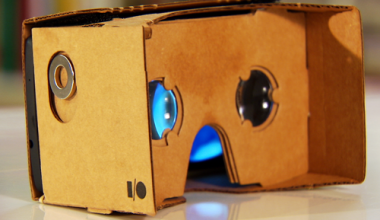launch of the iPhone 3GS, rumors are beginning to circulate about what we can expect from an iPhone 4G. One of the most-wanted, and most-speculated features for the next-generation iPhone OS is the ability to truly multitask between apps.
Apple has neither confirmed nor denied that a next-generation iPhone OS is impending at all, but that hasn’t stopped the speculation. Apple seems to be a slave to routine, and past development and release cycles suggest that we can expect a new iPhone OS this summer.
Multitasking, or the lack thereof, has been one of the most prevalent complaints about the iPhone as a serious business smartphone–although I am not sure it is iPhone users who are doing the complaining. The lack of iPhone multitasking was a prime target of Verizon’s “Droid Does” marketing campaign for the Android-based Motorola Droid.
The reality, though, is that the iPhone OS is already capable of multitasking–technically speaking. Certain apps and functions already multitask. You can switch to email or calendar while a voice call is still connected in the background. You can listen to music from the iPod function while continuing to use other apps on the iPhone. The multitasking is there, Apple has just restricted which apps actually have access to it.
To be honest, the iPhone screen only has enough real estate to display one app at a time, so multitasking is irrelevant in most cases. What is more important than literally leaving other apps open in the background, is building apps that are capable of retaining their state even when they’re not in the foreground.
In other words, I don’t need the app to run simultaneously, but as I switch from app to app I would like for the app to remember where I was so I don’t have to start over each time. Since I can only see one app at a time anyway, this sort of app memory basically achieves the same goal as true multitasking. This solution is the responsibility of the app developers rather than Apple itself, and many apps already take this approach.
True multitasking introduces some additional issues that Apple, or iPhone users will have to contend with.
- Battery Life. Battery life is often cited by Apple as one of the reasons multitasking hasn’t been allowed thus far. The more apps that are running at the same time, the faster the battery power will be consumed.
- Performance. Multitasking is still limited by the processing power and memory available to the system. Opening two or three applications on a Windows PC may work fine, but if you open ten applications you will probably grind your system to a virtual halt. Running multiple applications simultaneously will bog the iPhone down and could lead to frustrating performance.
- Management. As I stated above, you can only really see one app at a time on the iPhone. With multitasking, you might have four or five apps running in the background–eating up battery life and impacting performance–and you may forget about them. The next generation iPhone OS needs to include some sort of interface or function that shows which apps are active so you can manage them properly.
- Security. The iPhone OS closes the current app when you switch back to the main screen or accept an incoming call. This security model ensures that there are no apps running in the background and ensures that malicious apps can’t be used to compromise the iPhone, steal data, or spread malware. As has been seen with jailbroken iPhones, enabling multitasking opens the platform to potential malware attacks.
While these are concerns, it is hard to ignore the fact that all competing smartphone platforms already include multitasking and that many focus on that capability as a competitive differentiator when comparing against the iPhone.
I am not suggesting that Apple’s current pseudo-multitasking model is perfect, but I am pointing out that true multitasking is not without its issues, and that there are other potential solutions for a device like the iPhone which achieve the same results–or close enough at least–without introducing the concerns that come with multitasking.
Multitasking–true multitasking–is, in fact absent from the current iPhone OS. But, it seems like it is more of an issue from a marketing perspective than an actual concern of iPhone users. If, and when, Apple does introduce true multitasking in the iPhone OS, what will Apple competitors have to attack in their commercials?
The launch of the iPad changes the equation entirely as well. Because the iPad is built on the iPhone OS, and it has a significantly larger display to work with, users will expect to be able to open multiple apps and cascade or tile them to switch back and forth just as they are used to on desktop and notebook computers today.
While the value of multitasking on the iPhone itself may still be questionable, it would be a serious handicap to the iPad–even bigger than the inability to view Adobe Flash. Particularly when considering the potential business use of the iPad, multitasking becomes a critical element.
Multitasking is always at the top of the iPhone OS rumor list, though, so it may be premature to get too excited just yet.
Resource:
http://news.yahoo.com/s/pcworld/20100312/tc_pcworld/doestheiphoneosneedmultitasking_1


